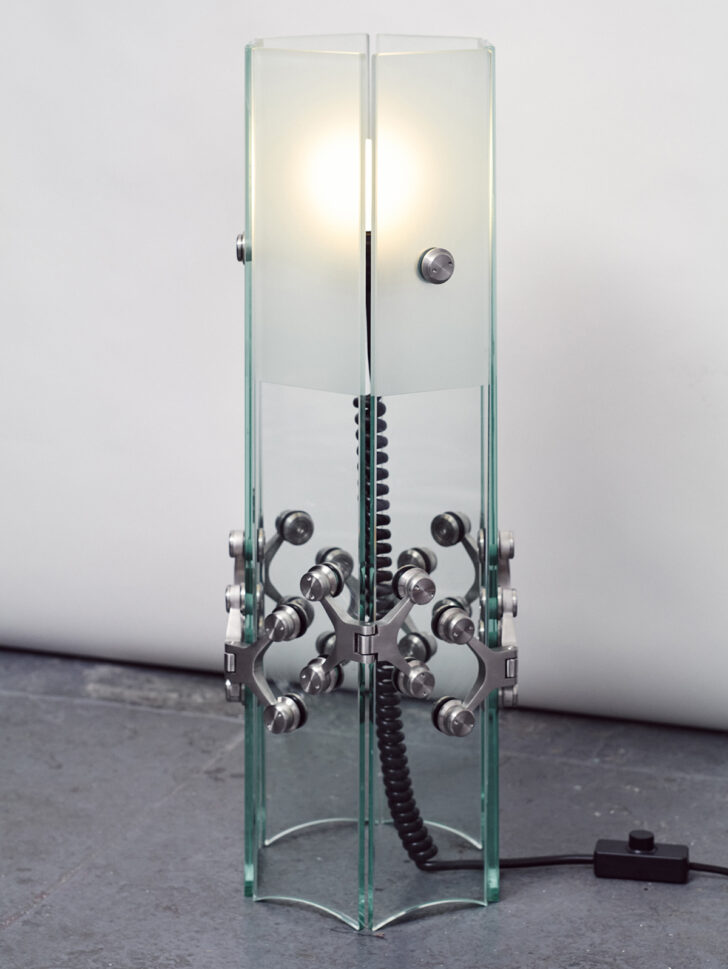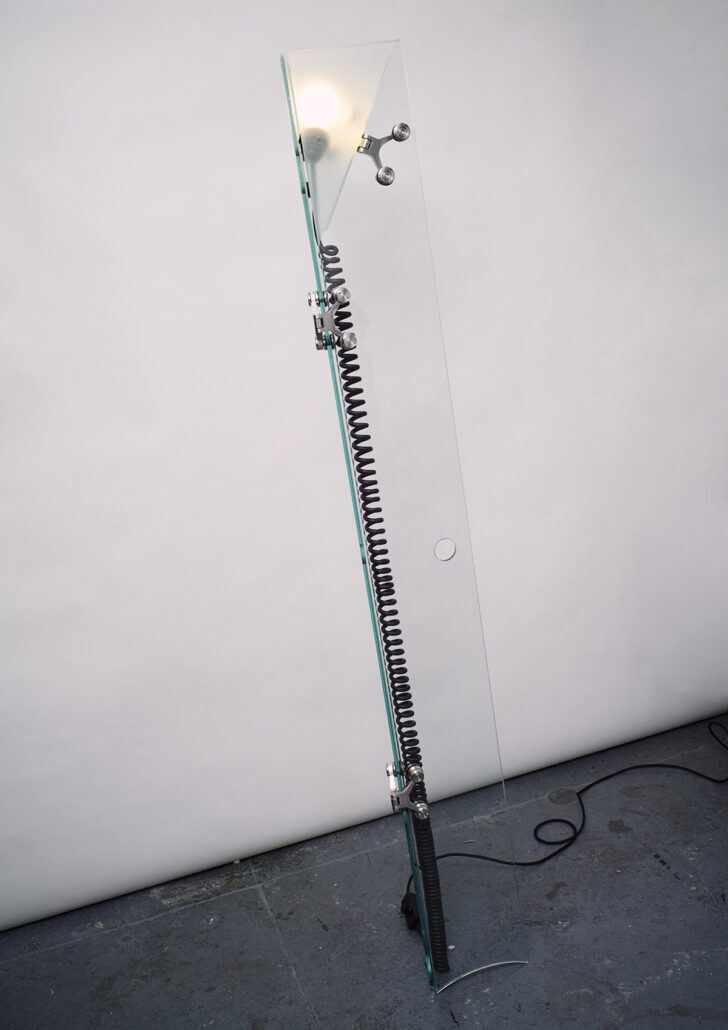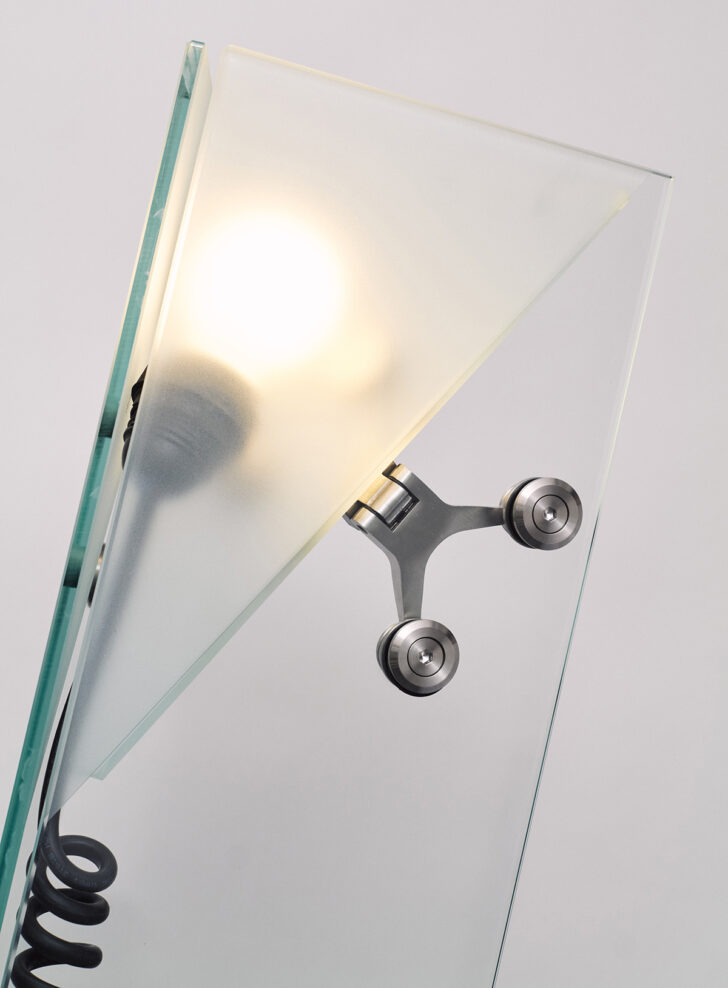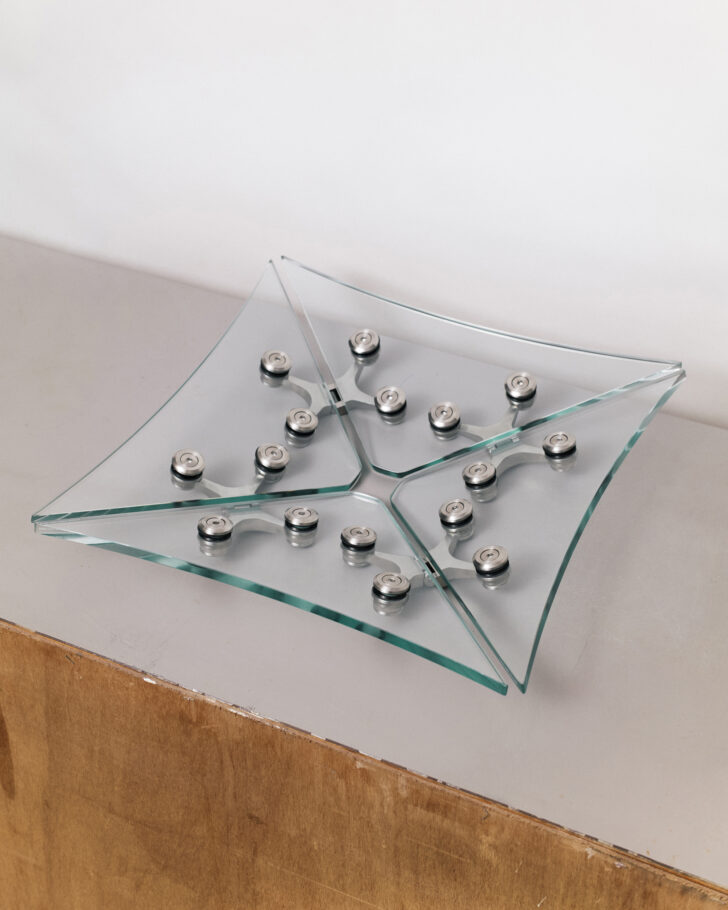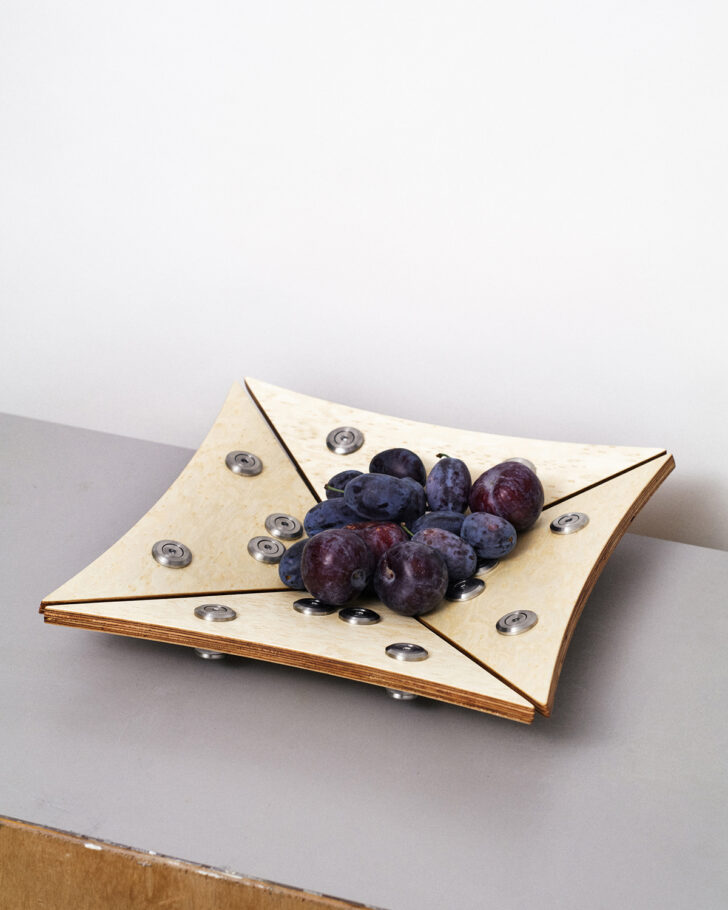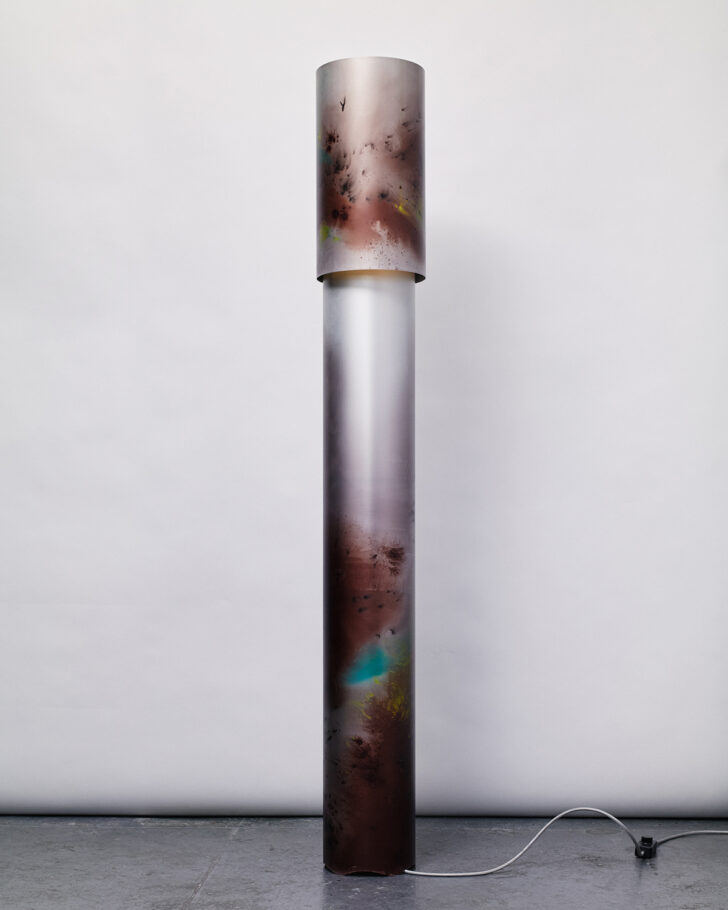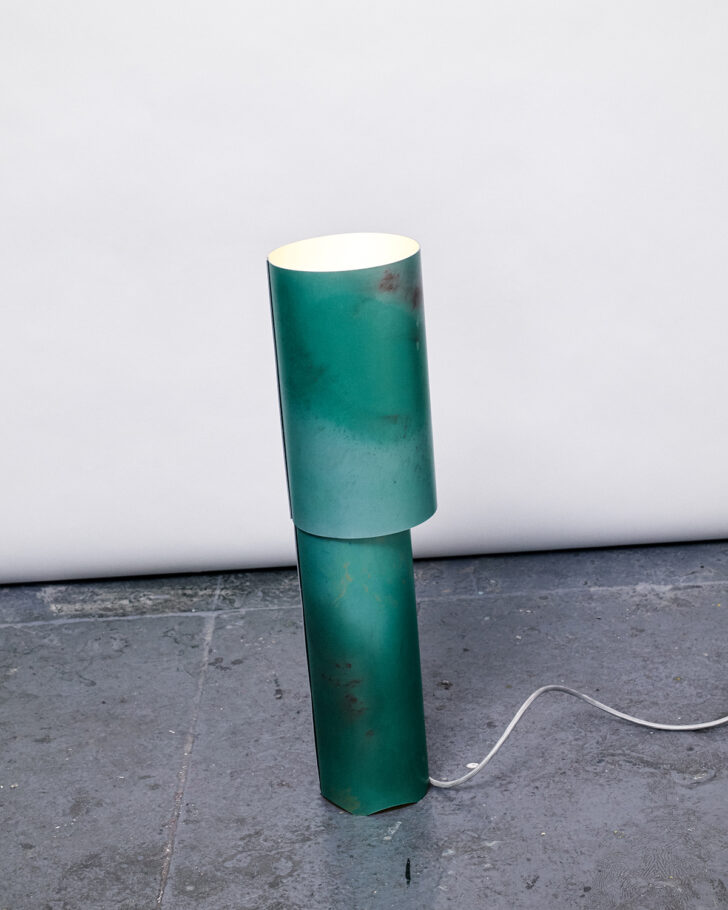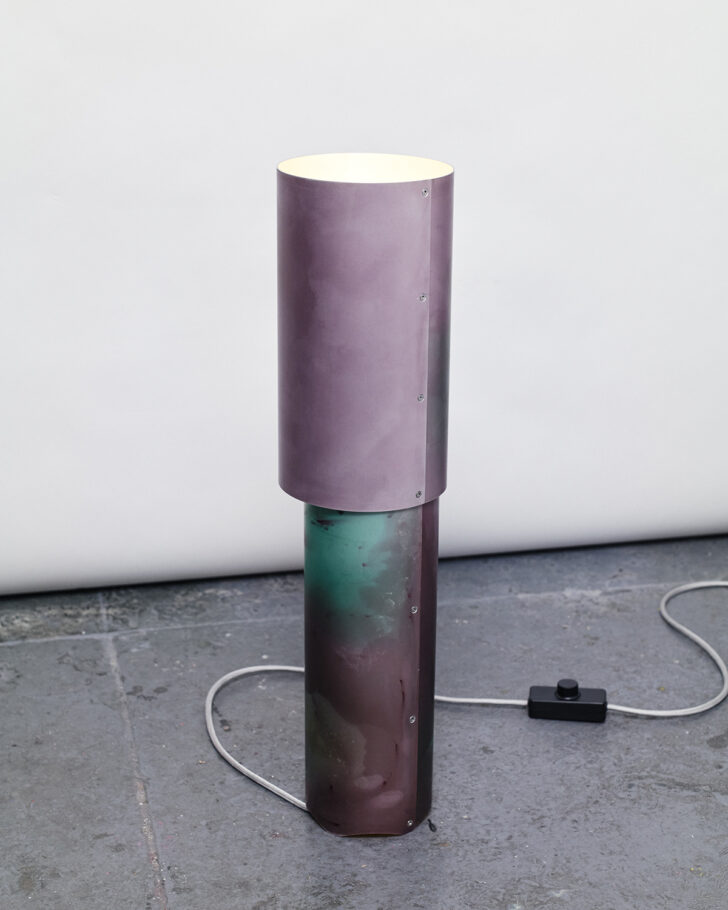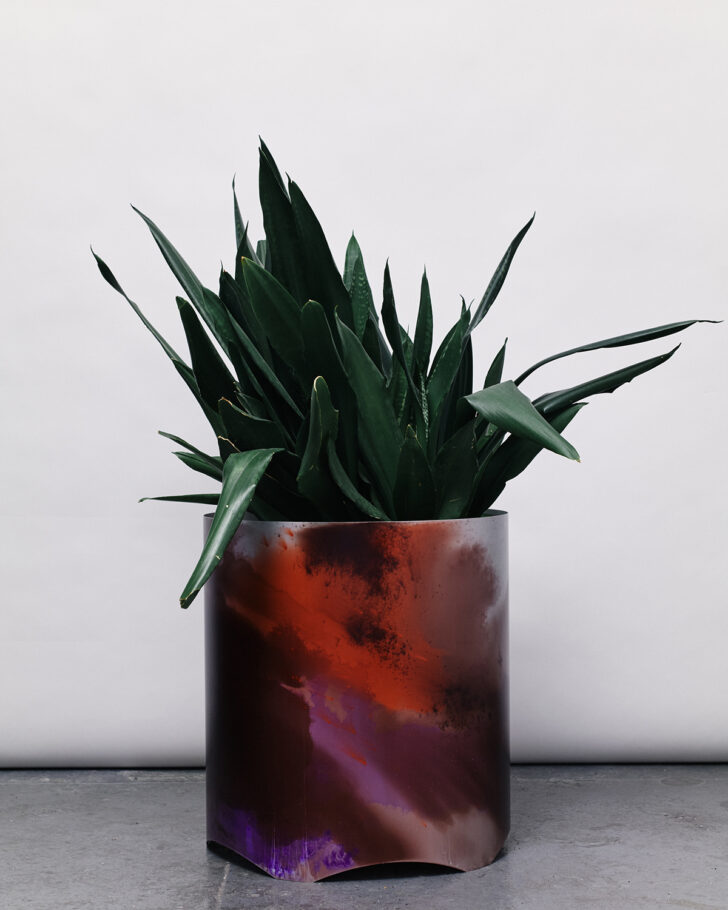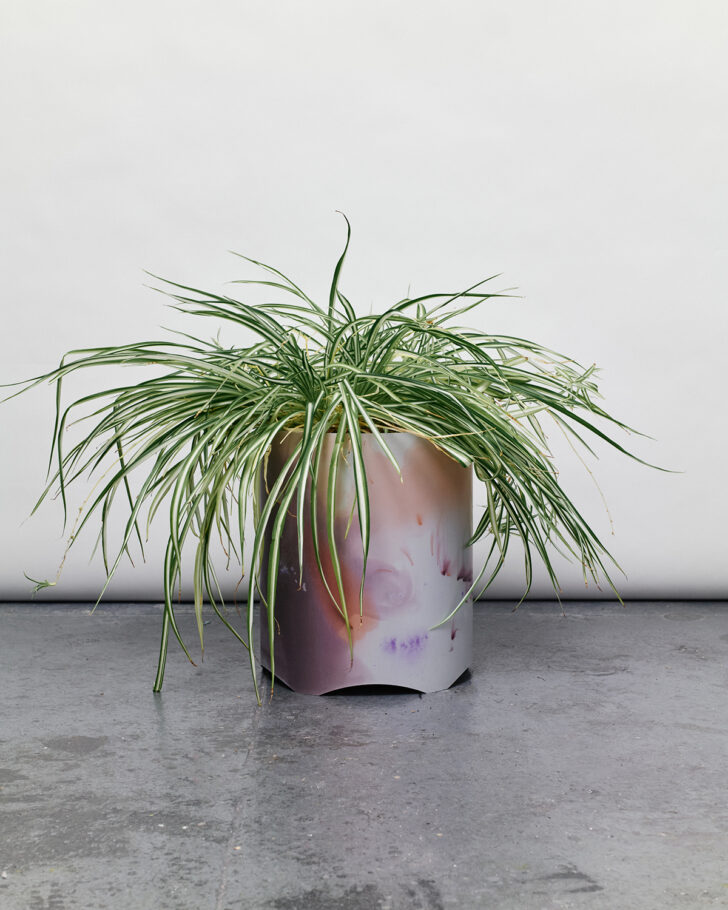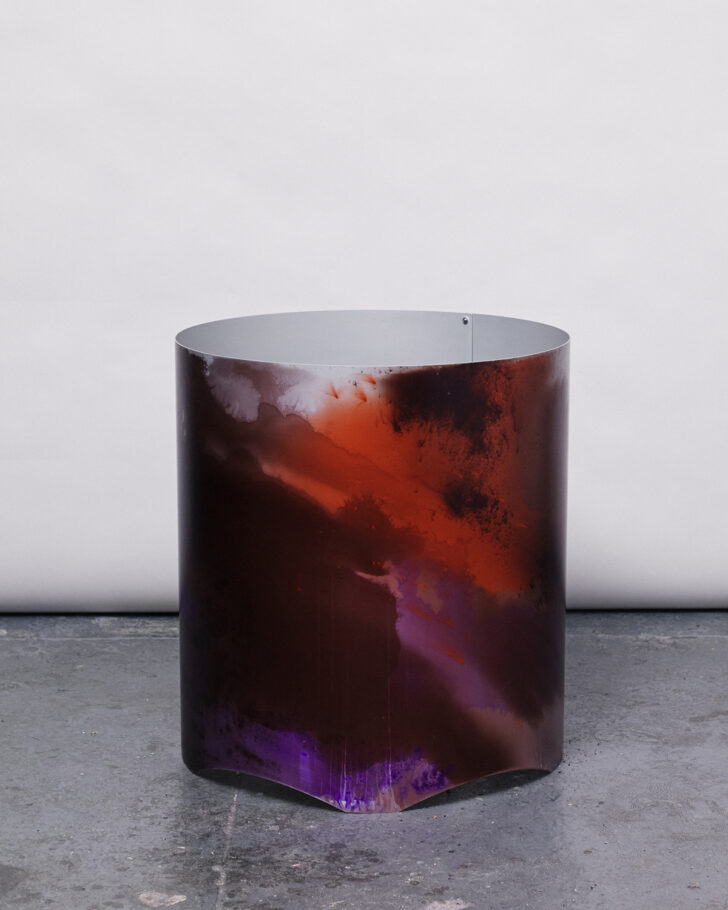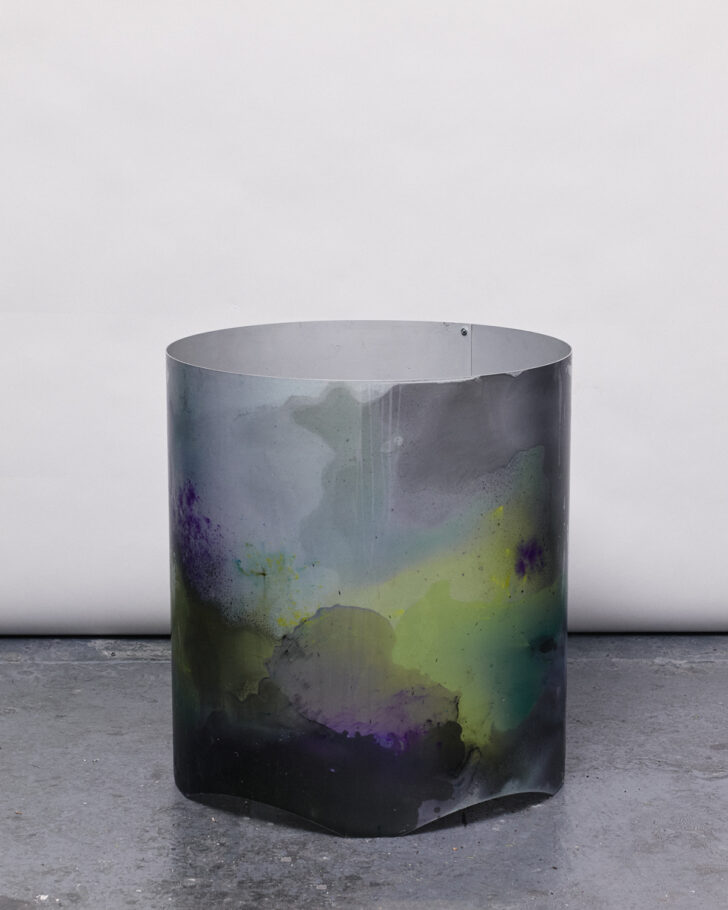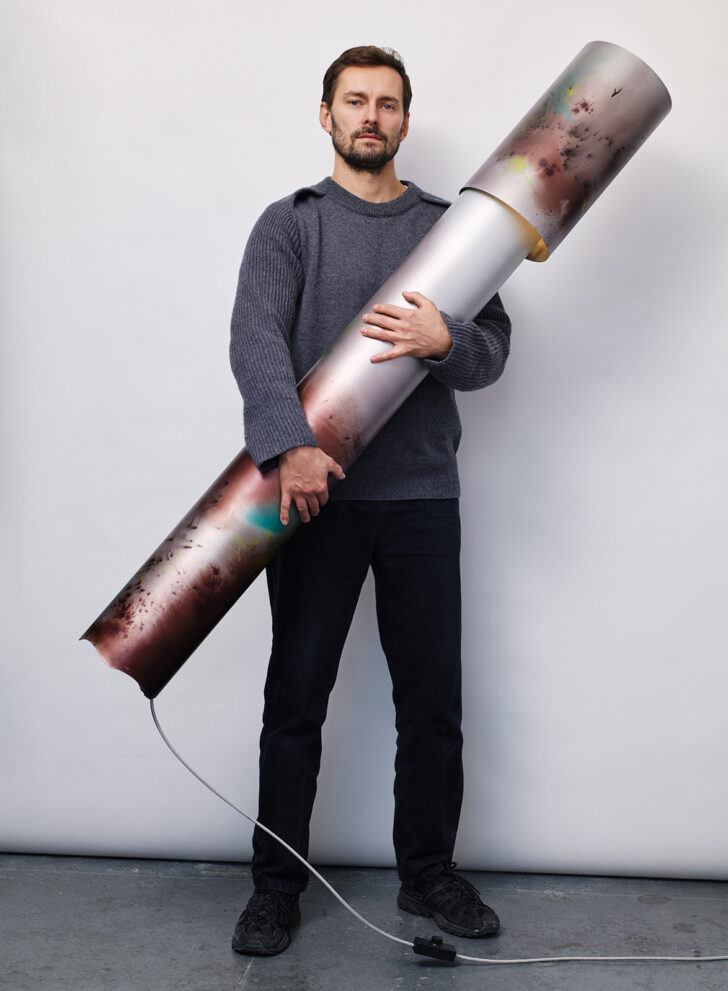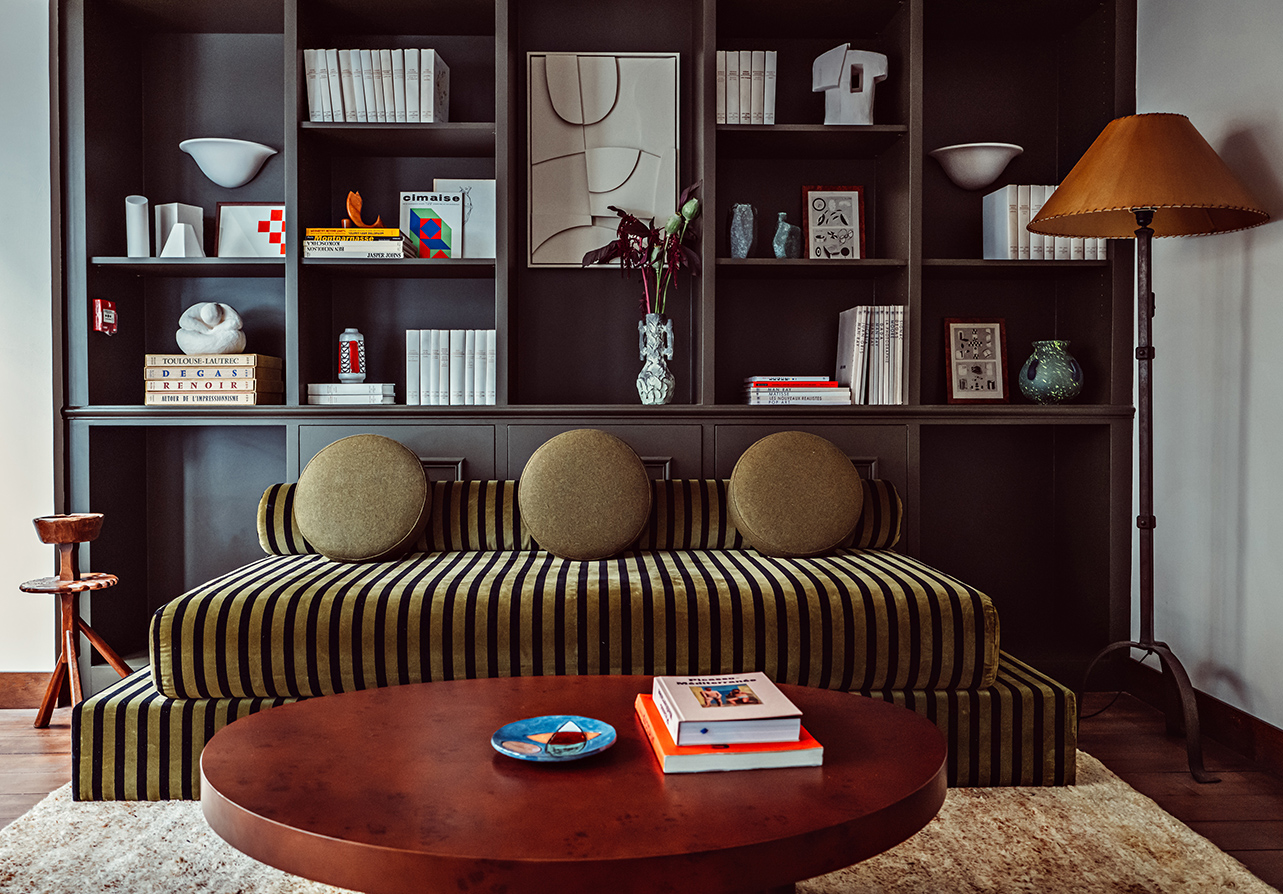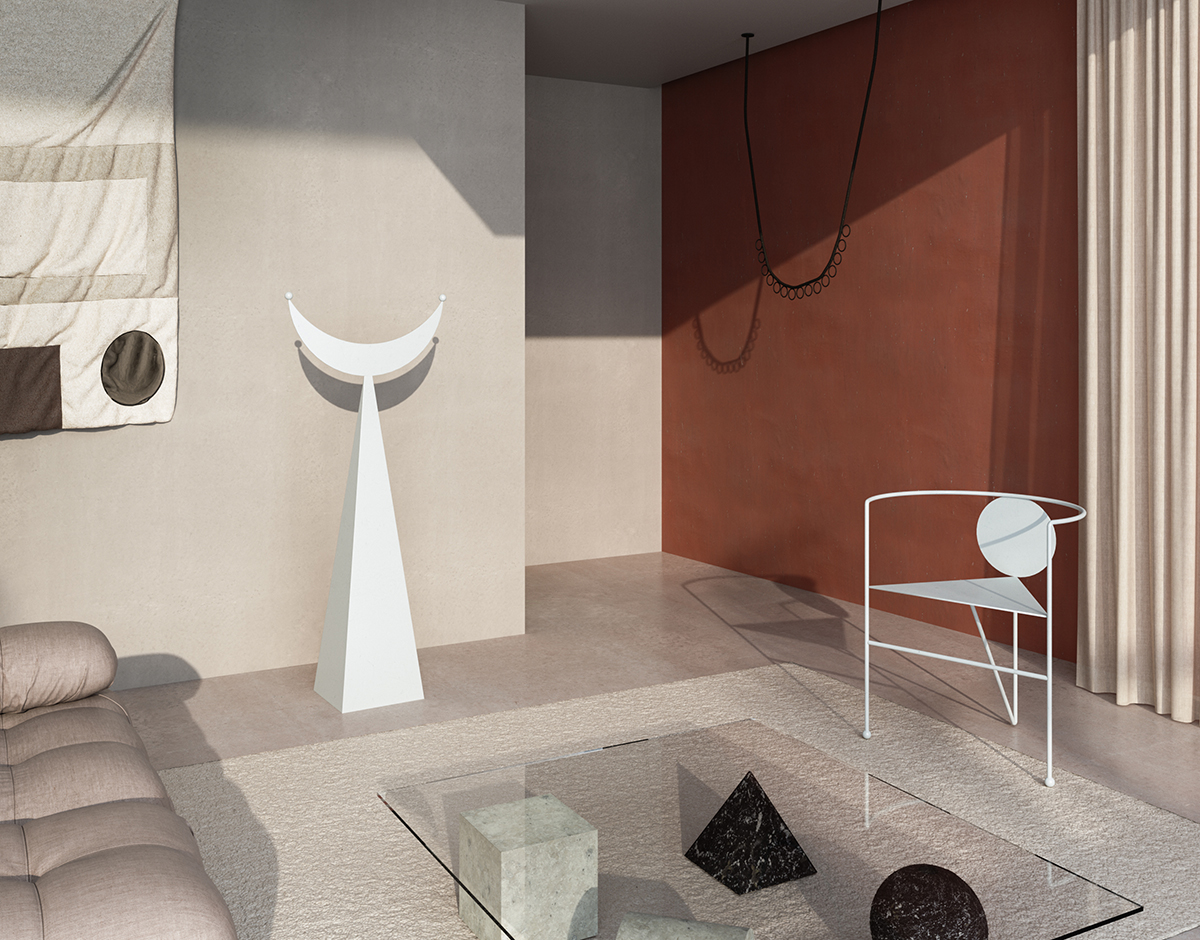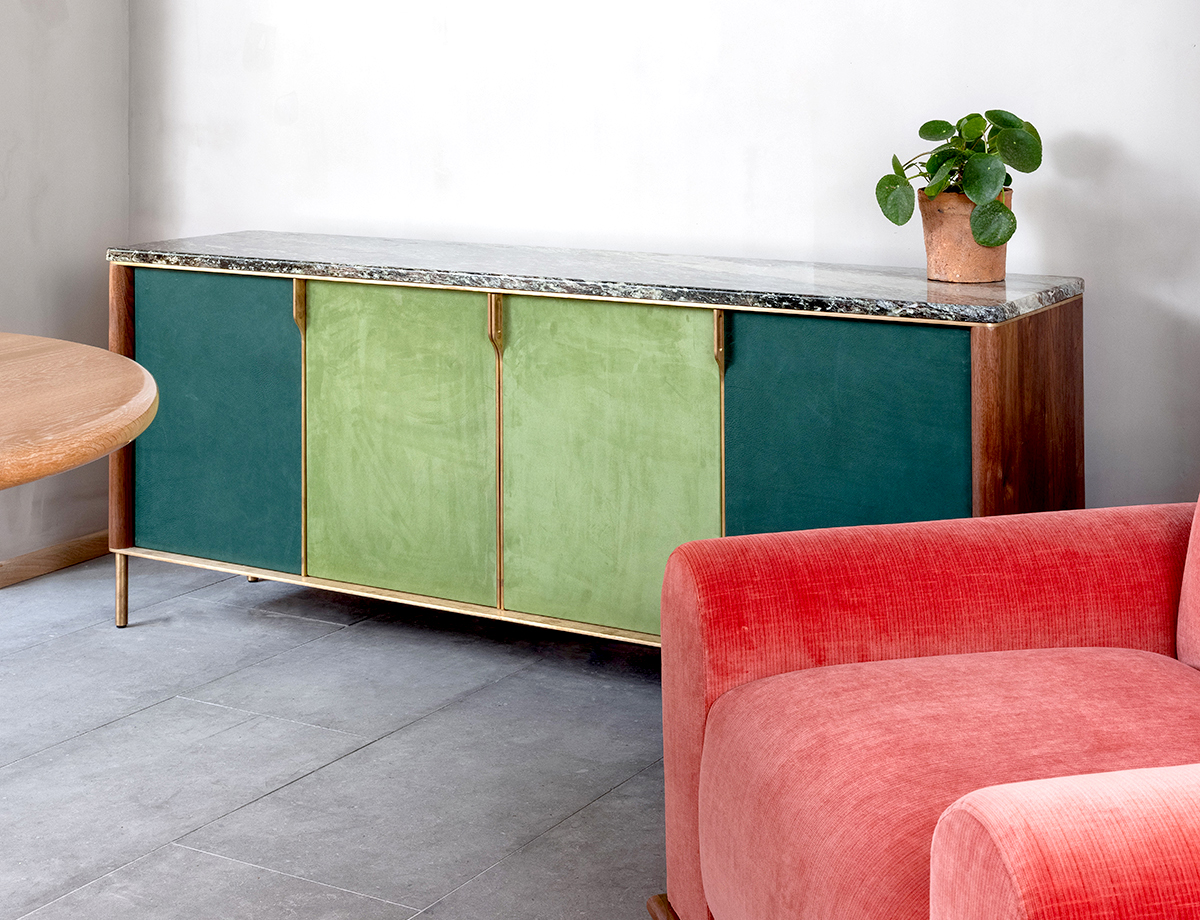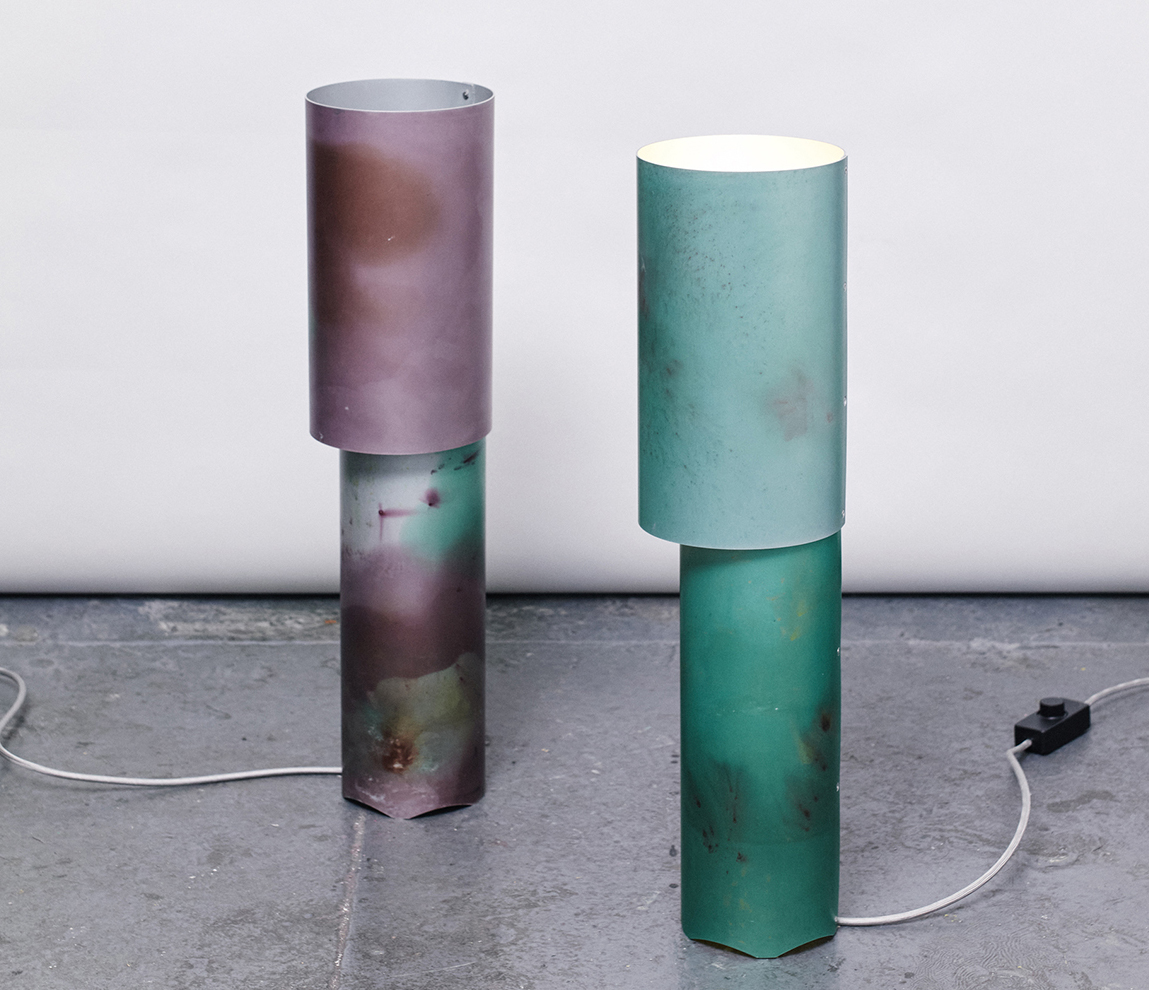
01.25.24
Sighted
Technology and Craft Meet in Tino Seubert’s New Aluminum and Glass Works
London-based designer Tino Seubert has a way of juxtaposing the industrial and the natural to create a coherent whole — even, or perhaps especially, as these elements clash and contrast. He’s been working in this vein, mixing traditional craftwork with technological sleekness and using unexpected combinations of materials and forms, since 2014 — when we first spotted him at London’s Royal College of Art, lacquering galvanized steel to brilliant effect — and 2018, when he developed benches and stools with anodized aluminum bodies and seats of woven cane for a show at the Hepworth Wakefield gallery. Different iterations have followed, as have pieces like a side table of bent rattan and brushed aluminum and his Corrugation lights, which combine ash veneer and aluminum tubes into rippling yet static sine curves. With Ferric Glass and Cosmos, his two new collections exhibited at in BAM Practice in Berlin this past November, Seubert has pushed these juxtapositions even further.
In both series, Seubert transforms sheets of glass or metal into three-dimensional structures of varying volume. “My work in general is definitely very material-focused, and especially for these two projects — Cosmos and Ferric Glass — the materials came first. Once I had figured them out, I looked at what I could apply them to,” Seubert says. Ferric Glass features a floor lamp, table lamp, and two bowls that are as functional as they are alien-seeming. A coiled wire runs down the interior length of the floor lamp, giving it the feel of a bionic organism. It’s Seubert’s first time working with glass, and he opted for thick clear and frosted versions, which have a slightly green tint due to the iron in them. Seubert adds that he “randomly came across these weirdly shaped spider hinges” to connect it all. “I had probably seen them in glass architecture before, but never noticed them consciously.” (In researching this project, Seubert was particularly inspired by glass architecture from the ‘90s.)
With Cosmos, Seubert manually anodized flats of aluminum, rolling and bolting the metal into cylinders to create planters and lighting. (Anodizing involves submerging the aluminum in an electrolytic bath and applying voltage, which gives the material a protective layer of aluminum oxide). Hand-anodizing is a technique Seubert first used in a series of extra-large planters for the fashion label McQ’s Grow Up collection a few years ago. What fascinates him about anodization is the way it gives material color, hardens it at the same time, and preserves its metallic sheen. “It’s not just like covering it with paint, but the aluminum actually absorbs the pigment. And what I love about anodizing by hand is that it is a somewhat random process. The outcome isn’t fully controllable and it always surprises you with new exciting patterns.” What emerged this time evokes space photography and it goes so well with Seubert’s approach: the vast mystery and beauty of the universe… as captured by machines… created by humans.
